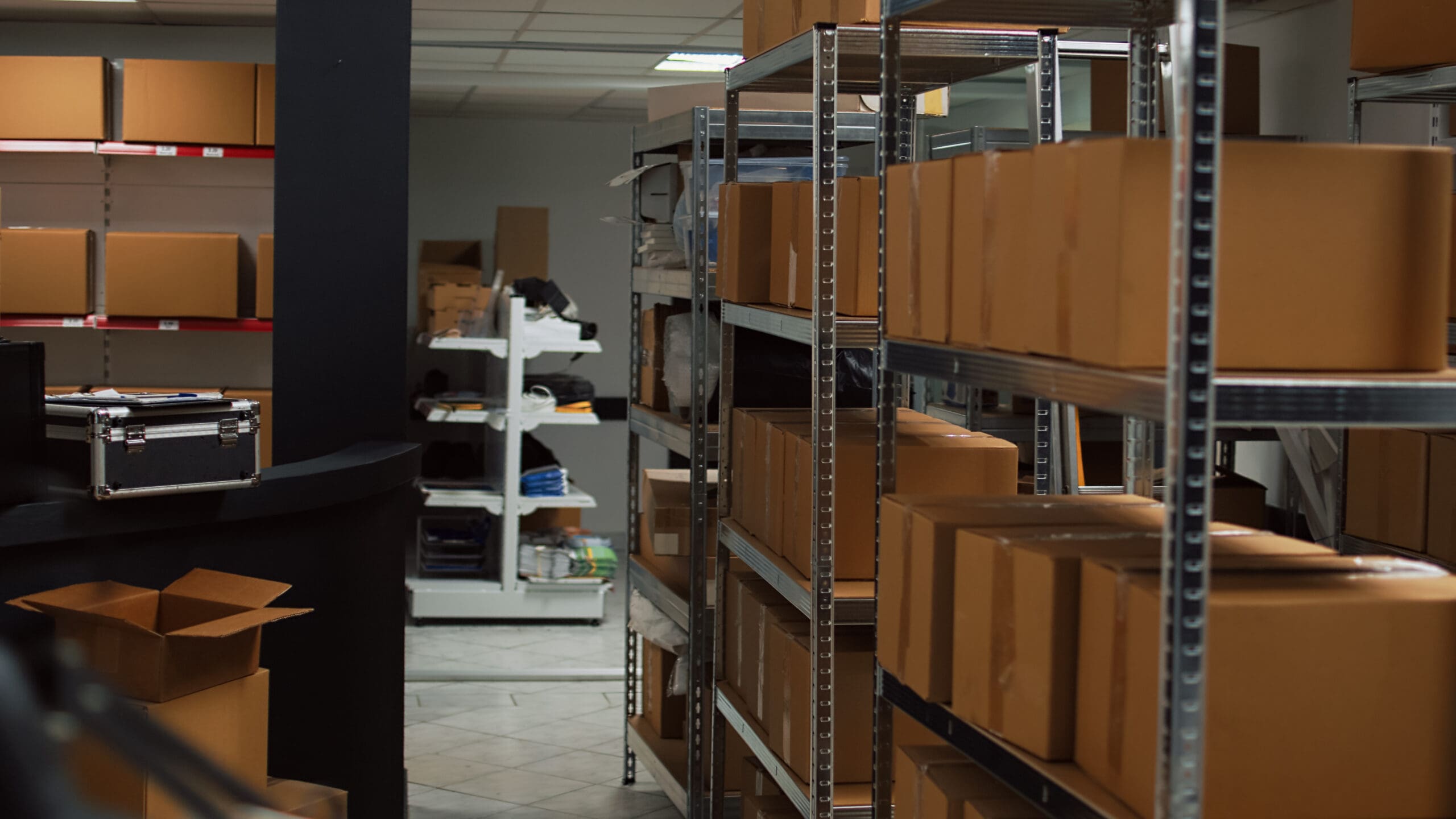Whether you are a small business or an established company, cash flow determines how much your company is able to invest in growth. Having poor cash flow doesn’t necessarily mean you’re running a company poorly; many companies with seasonal products experience extreme variances in cash flow throughout the year, and any product company that orders inventory and then has a gap between when they pay the manufacturer and when they receive the product can experience temporary cash flow pinching. To help overcome this or fund expansion, businesses take out various types of asset-based loans to cover expenses, fund expansion projects, upgrade existing equipment and machinery, or increase working capital.
Here we’ll help you understand the basics of asset-based loans so you can review whether they may help your company.
What is asset-based lending?
As the name intends to suggest, asset-based lending is a type of loan that is secured by a company’s assets. These loans are often used by businesses in order to cover short-term cash flow demands or recurring expenses. It can also be used as additional working capital to upgrade existing machinery and equipment, hire seasonal staff, and improve business operations through the acquisition of new technology.
How does an asset-based loan work?
You’ll often see asset-based loans in two formats: a traditional term loan or a business line of credit. The way asset-based loans work is that a lender offers you an advance of capital based on the assets you put up as collateral. To simplify, if you put up collateral worth $10, you can expect a similar amount to be loaned to you. Asset-based loans can be secured using different assets, such as accounts receivable, inventory, equipment, and property. However, you should know that your loan amount does not solely rely on the value of your assets — it also depends on how the lender values the items you use as collateral; you’ll hear this referred to as the loan-to-value ratio. Lenders often let you borrow a set percentage of your asset’s value, and they value different types of assets differently. For example, lenders will often let you borrow up to 70% of the value of accounts receivables and 50% the value of existing inventory. So generally, the loan-to-value ratio for receivables and inventories are 70% and 50% respectively.
As for paying back your loan, repayment terms depend on the type of asset-based financing you applied for. For instance, if you opt for a term loan, you’ll find the repayment terms similar to most other loan types: Your business would pay back the money you borrowed, plus interest, over a set period of time. If you’ve opened an asset-based business line of credit, you only need to make payments on the amount you borrowed and the accompanying interest.
What assets can be used to secure a loan?
As mentioned above, an asset-based loan can be secured using different assets such as accounts receivable, inventory, equipment, and property.
- Accounts Receivable – Accounts receivable refers to the incoming money owed to a business for products or services. Lenders use this as collateral as it shows them that the borrower has enough incoming cash flow to pay back a loan.
- Inventory – Lenders may also take a look at a business’ inventory and appraise it to use as collateral in the event that a borrower defaults on a loan.
- Equipment or Machinery – Typically, lenders appraise a business’ equipment and provide funds around 50% of the equipment’s liquidation value. In some cases, a larger loan may be provided for newer and more advanced equipment.
- Other business property – Businesses may also use commercial and other real estate properties as collateral in asset-based loans.
Why do lenders ask for collateral while lending?
The main reason why lenders ask for collateral is security. If the borrower defaults on their loan, the lender has the right to sell the collateral in order to secure the repayment of a loan and recoup financial losses (if there are any). Collateral indicates a customer’s commitment to paying back the loan and lessens the risk for the lender. This makes asset-based loans perfect for borrowers with poor credit or businesses that are operational for less than a year. What makes asset-based loans attractive to multiple kinds of businesses is that it provides a level of accessibility to different kinds of borrowers. However, if you don’t pay back your loan, you risk losing whatever property you put up as collateral.
What are some examples of collateral?
As discussed, lenders that provide asset-based loans are very particular with assets that can qualify as collateral. The assets that lenders may consider would depend on the nature of your business as well as the assets that you currently have. When it comes to asset-based financing, companies usually put up collateral such as property, inventory, accounts receivable, machinery and equipment, and other assets owned by the borrower.
The 7 most important things to know about asset-based lending
If you are seriously considering asset-based lending as an option to increase your working capital, here are seven important things that you need to know to help you make an informed decision.
1) Understanding loan-to-value ratio (LTV)
If you are new to asset-based loans, one of the most important things to understand is the concept of loan-to-value ratio. Loan-to-value (LTV) ratio is calculated by dividing the amount borrowed by the appraised value of the property being put up as collateral. This means that even if you put up a valuable asset as collateral, you will never get the full appraised value in the form of a loan.
For example, if the asset you put up as collateral is worth $100,000 and your lender gave you an LTV of 75%, then you would be eligible to borrow up to $75,000.
2) Advantages of asset-based loans
Like other types of loans, loans secured by collateral have their advantages and disadvantages. Let’s take a look at some of the most common pros and cons of asset-based lending to help you determine if this is the type of loan for you.
- Easier to qualify for as opposed to other types of loans
- Perfect for manufacturers, distributors, and other businesses that deal with seasonal demand
- Greater flexibility when it comes to spending the capital
- Lenders are more willing to look past bad credit as long as the loan is secured by collateral
3) Disadvantages of asset-based loans
- The biggest downside of asset-based financing is that you lose your assets if you default on your loan
- Lenders are very particular with assets that can qualify as collateral
- May come with additional fees
4) What types of companies use asset-based lending?
Since collateral can include a wide range of items, there are various businesses that can be eligible for an asset-based loan. Some of the businesses that typically use asset-based lending are those in the manufacturing, distribution, and retail sector. In addition, companies that have valuable equipment and machinery can also apply for asset-based financing.
5) When should I use asset-based loans?
Businesses, regardless of size, need money to keep day-to-day operations going. Determining when you should apply for asset-based loans depends on how you are planning to use your loan and how soon you need additional funding. Businesses with bad credit or experiencing poor cash flow would do well in choosing asset-based loans as it’s usually more flexible and easier to acquire.
6) How does an asset-based loan work?
For example, Company A mainly deals with selling high-quality electronics and is seeking a $100,000 loan to fund its expansion project. If Company A pledges its inventory, the lender may grant a loan amounting to 50% of the appraised value of the inventory. If Company A’s inventory is valued at $150,000, this means that the lender is willing to loan $75,000. Note, however, that asset-based loans highly depend on the type and value of the collateral you are pledging.
7) How do I get an asset-based loan?
To qualify for an asset-based loan, businesses must have valuable assets that can be borrowed against. After identifying collateral that can qualify as an asset, you would have to submit documentation requested by your lender in the application process. Once the lender determines that you are a good candidate for a loan, you will receive an offer that you are required to make a preliminary commitment to before a lender performs an audit of your assets.
Are collateral loans a good idea?
It highly depends on what your company needs at the moment. While collateral loans are easier to qualify for, remember that your prospective lender can seize a valuable business asset if you become unable to pay back your loan. If you are still unsure about whether or not asset-based lending is right for you, it’s worth shopping around for alternative financing options that could best fit your business’ current needs.
Are there alternatives to asset-based lending?
The reality is, asset-based loans are not compatible with all small businesses. Asset-based loans involve some risks and limitations that may prove to be a burden to some borrowers. The great thing is, there are other financing options available that may be a better fit for your business’ unique needs. Let’s talk about Kickfurther.
Kickfurther is an inventory funding platform that enables businesses to purchase enough inventory to meet trajectory, even if that amount is higher than the company’s available cash on hand. Kickfurther can pay your manufacturer directly and then you pay a small profit percentage later on each funded item as it sells, with no payments until inventory begins selling and payment timelines that are customized to your production and sales cycles, from one to 10 months. If you are a product business and looking to grow sales and maximize the potential of the money you have on hand to expand your business, , visit Kickfurther at www.kickfurther.com.









